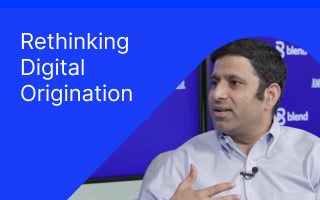March 10, 2022 in Challenges and solutions
Digital banking engagement platforms: 5 foundational capabilities
With intelligent, intuitive cloud-based technology, financial institutions can deliver the experiences that today’s consumers have come to expect.

Great engagement is the foundation of lasting relationships, regardless of industry. And while engagement seems simple in concept, it is not always easy to put into practice.
We’ll deliver on our promise for great insights.
Subscribe for industry trends, product updates, and much more.
Not only does engagement require intentional actions informed by empathy for customers’ needs, it also needs to be delivered in a way that aligns with modern expectations for communication. Historically, bankers could rely on in-person experiences at branches to help foster the level of engagement that makes or breaks a brand. But in our digital world — and especially in our more-distanced modern reality — bankers are relying on digital mechanisms to deliver on the promise of great experiences.
Unfortunately, some financial institutions are failing to deliver the online experiences that today’s highly-demanding consumers are looking for. Why? All too often, it’s because they are held back by siloed solutions and decades-old architecture.
Daunted by the prospect of a comprehensive upheaval to their systems, processes, and people, they make do with what they have — and consequently struggle to compete. As a result, more than 75% of financial institutions say they are ‘not adept’ at key areas of digital transformation.
As the needs of bankers have evolved, so too have the solutions designed to support them. Today, digital banking engagement platforms are purpose-built to meet the needs of digital audiences while aligning to the day-to-day realities of banking staff. Let’s explore five key attributes banking leaders can look for as they evaluate their options.
What is a digital banking engagement platform?
But first, what exactly is a digital banking engagement platform? Gartner defines it as technology that “enables a bank to begin the transformational process of becoming a truly digital bank that is ecosystem-centric.” In addition, it says it should help banks achieve business optimization.
What does this mean in practice? A digital banking engagement platform allows banks to expedite their digital transformation and connect with customers online — without the need to rip and replace existing architecture.
Instead, it works in tandem with current systems, seamlessly integrating new digital capabilities that can help banks compete not only with their digitally native banking counterparts, but also with digital trendsetters operating outside of banking.
In short, it gives financial institutions the digital agility they need to adapt to new customer needs quickly and effectively.
What capabilities should financial institutions look for in a digital banking platform?
Not all digital banking engagement platforms are equal. We reviewed a variety of analyst perspectives on digital banking engagement platforms and found five key capabilities that financial institutions should look for:
1. A solution that supports multiple channels and product lines
More advanced digital banking engagement platforms can deliver a streamlined journey for customers, across both products and channels. This means a customer can start an application on their mobile device, for example, then finish it up on their laptop later on. They can apply for a mortgage and then open up a bank account at the same time, without having to re-enter their data.
This functionality helps build consistency and continuity — and this can foster consumer trust and loyalty as a result.
2. A great user experience
A key goal for any financial institution is to provide a great user experience, and a carefully chosen digital banking engagement platform can facilitate this. It’s important to deliver a low-effort, end-to-end experience that makes banking straightforward from application to close. Responsive design, along with features like seamless borrower single sign on from any digital device, loan pre-approvals, guided information flows, and e-sign can all help.
3. Intelligent automation
When a digital banking engagement platform leverages intelligent automation, everyone benefits. Application data can be pre-filled, and letter templates can be created — minimizing the paperwork burden for banking teams, and freeing them up to work on more value-adding engagement activities.
At the same time, the interaction with customers is humanized. For example, borrowers can be prompted with questions for further explanation and are guided through their application in a streamlined, intuitive way. Intelligent suggestions can be made on products that are relevant and useful.
4. A cloud-based architecture
Unlike traditional solutions that have to be installed on a specific device, cloud-based technologies save information in a remote database so they can be accessed from anywhere, as long as you have an internet connection. This technology enables banking teams to collaborate with each other and stay in touch with their customers, all without tethering them to their desks. Updates to service offerings can be made automatically, meaning that users always have access to the latest version, and banks can scale capacity up or down as they need it, improving ROI as a result.
This flexibility is key for banks, especially at a time when it is necessary to adapt and change quickly and effectively — all while maintaining a customer-centric focus.
5. Seamless connectivity
Many banks are exploring digital banking engagement platforms that use APIs. By allowing better information exchange, this type of platform can deliver three key benefits. First, it supports greater connectivity with existing platforms, which can minimize silos and provide a 360-degree view of customer touchpoints while streamlining document collection into one central location. Keeping customer communication in one platform makes it easier for both parties to stay in touch and stay on top of process progress.
Effective data connectivity allows borrowers to connect external data sources such as their asset, payroll, and tax accounts. This helps bankers since it can reduce manual, downstream work and increase productivity. And when banking teams spend less time tracking down or verifying paperwork, they can focus on more important topics with their customers.
Finally, consumers can benefit from faster application times enabled by data connectivity. Advanced digital banking engagement platforms have the capability to pre-fill data in their applications. This can improve the overall experience and keep potential customers engaged during the application process.
Discover Blend’s digital banking engagement platform
Blend’s cloud-based solution has been built with the unique needs of the financial services industry in mind. Our digital banking engagement platform supports a wide range of consumer banking and lending products — all intended to enable efficient, engaging experiences for both consumers and banking teams.
Guided application flows, highly responsive design, and data pre-fill functionality are designed to deliver a great user experience. Our intelligent automation allows instant pre-approvals for many products while decreasing the number of manual processing tasks required, thanks to data-driven workflows. Blend also connects with a variety of integral systems, including LOS, CRM, and third party service providers for credit and data verification. With Blend, banking teams have more tools to deliver seamless customer service and more time to strengthen customer relationships.

Ready to see the full extent of our capabilities?
Find out what we're up to!
Subscribe to get Blend news, customer stories, events, and industry insights.

